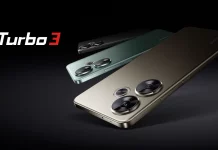A few days ago Kornél already summarised, what significant events happened with Xiaomi in 2017. Now let's take a closer look at what phones Xiaomi has unveiled this year.
2017 has been a successful year in Xiaomi's history, with a steady increase in sales over the past two years. If we wanted to take stock of what other products - smart home, and other gadgets - besides smartphones, have come out from under Xiaomi's wing, we would probably still be writing this article in the first week of January. Xiaomi has now opened its own stores not only in China, but also in India, Russia, Spain (soon to be France). The arrival of Mi Store and Mi Home stores in Western Europe is, for us, an even more encouraging sign of a process of which Hungary could be a stage in the near future.
Dozens smart home, clothing, vehicles, clothing accessories, medical accessories, security solutions...
You can read about a significant and interesting part of these on helloxiaom. The number of Smart Home items has been growing and the trend is not stopping in 2018. In fact, that's when it will really start. It will be the first full year for helloxiaomi's editorial team to follow and publish the latest announcements, events and results of the manufacturer in Hungarian for you from the New Year. As far as possible, we will try to bring you the latest announcements and tests as quickly as possible.
Recollections from the author's point of view:
For my part, I joined the ever-expanding ranks of Xiaomi users in August 2014. I was still browsing forums, looking at reviews. Then Xiaomi came along as a possible alternative to the expensive models of the big names. I knew the line-up of players in the market at the time, and the knowledge/price was not very sympathetic. To this day, I still dream of the sky that I dared to take a risk then and chose a model from a totally unknown brand. And this is the Mi3, still one of the best Xiaomi phones in the eyes of many. The design is timeless, and even after three years, it's not boring enough to make me use it out of necessity.
It's the first mobile phone I've used for the longest time, 16 years, without replacing it.I stumbled upon the Miu forum at the end of 2014 and updated the ruins with the help of the team there. Rajen (Kornél), and the hard core of the Xiaomi community helped a lot, and still helps to this day, to get all the answers/solutions to all the problems of the novice user. However, it was only this year that my curiosity for Xiaomi's portfolio grew enough to delve deeper into this intricate web of partnerships. I think that not only I, but many of you owe to the helloxiaomi news portal the amount of information and knowledge that has made you a Xiaomi (MIUI) fan or a satisfied owner of a Xiaomi product.
A number of flagships have been unveiled, whether in the Mi or even the - in its own way - Redmi range. I am honoured to be the first to present Xiaomi's 2017 phone launches in chronological order on a Hungarian news portal.
What series
Mi 5c
 Earlier this year, Xiaomi unveiled the first self-designed Surge S1 SoC, codenamed Pinecone, with the newly launched Mi 5c. Xiaomi then joined the narrow group of companies that produce their own processors, like Apple, Samsung and Huawei. For the time being, the other manufacturers have the intention to do so, but we have not heard of any substantial developments in recent months. Like all new ventures (attempts), Xiaomi has had difficulties with its first own solution. Production was not economical enough, and tests showed that performance lagged behind a similar solution from a rival (Qualcomm) manufacturer. The support was also a bit patchy. Contrary to earlier reports, HMD Nokia did not include it in any of its devices (although the reciprocal agreement included it).
Earlier this year, Xiaomi unveiled the first self-designed Surge S1 SoC, codenamed Pinecone, with the newly launched Mi 5c. Xiaomi then joined the narrow group of companies that produce their own processors, like Apple, Samsung and Huawei. For the time being, the other manufacturers have the intention to do so, but we have not heard of any substantial developments in recent months. Like all new ventures (attempts), Xiaomi has had difficulties with its first own solution. Production was not economical enough, and tests showed that performance lagged behind a similar solution from a rival (Qualcomm) manufacturer. The support was also a bit patchy. Contrary to earlier reports, HMD Nokia did not include it in any of its devices (although the reciprocal agreement included it).
Trade-offs
Although they managed to create a flawless model in terms of looks (shape, display, camera), the small battery was too much of a compromise to make it a mainstream model. The handset is currently only fully usable in China (as it only works flawlessly on China Mobile's network, probably due to the contract between the two companies and the limitations of the Surge S1 processor).
However, this is somewhat contradicted by the fact that several European users (including several Hungarian members) use it with satisfaction. The reason for this may be that external developers have managed to optimize the Chinese ROM so much that, apart from supporting the Hungarian language, the phone has no problems with network connectivity. However, the 800 MHz (B20) support has been left out, as in almost all models of the Mi series, as well as 4G VoLTE is not allowed in our country.
The European rollout was also hindered by the fact that in the months after the release, the price of the Mi 5c was still quite high (over 100e HUF with tax in Hungary.) The price has decreased, and you can now get it at Redmi price. Although my personal favourite (design, camera), I would not recommend it to anyone with a clear conscience.
I should note here that in recent months and weeks there have been several rumours about the upcoming successor, which could be the Surge S2 in processor and the Mi 6c or Mi 6x in phone. Let's hope it materialises, eliminating all the predecessor's flaws.
Several Hungarian shops have realised that it is not worth it for them to sell gassed scrap, so where there is no specialist team behind the sales (they sell normal scrap), they have taken it out of their range.
Specifications of the Xiaomi Mi 5c:
- Surge S1 eight-core 64-bit processor (2.2 GHz quad-core A53 + 1.4 GHz quad-core A53)
- 5.15" IPS display, 550nit brightness, "ultra-precise" backlight, 94.4% NTSC colour gamut
- thin and airy premium metal body, 132g, 7.09mm thin
- 2860mAh battery (9V/2A fast charge)
- 3 /64 GB, dual channel LPDDR3 + eMMC5.0
- Dual Sim, Nano size
- 1.25 micron sensor, ultra-sensitive 12MP rear camera
- HDR mode
- f2.0 lens, 27 mm wide angle of view
- 8 MP front camera
- Front fingerprint sensor
- USB-C port
- 3G, LTE support (without B20)
- Android Marshmallow, MIUI 8 (at launch)
- 802.11a/b/g/n/ac dual-band wireless network
- Wifi, Bluetooth 4.1, GPS, A-GPS, GLONASS, Beidou positioning
- Gold, black, and pink colours
Official video
Mi Pad 3
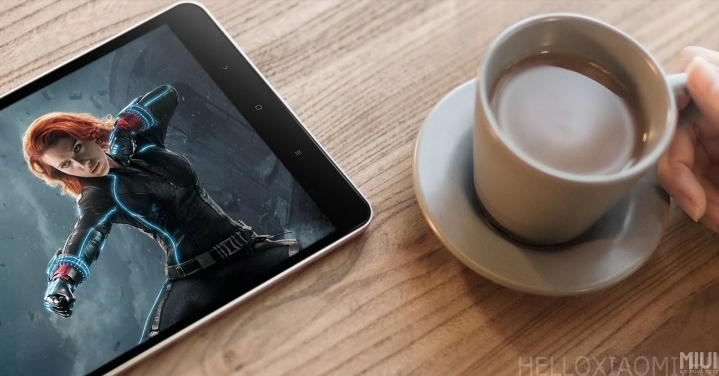 After a long break, the Xiaomi Mi Pad family has a new member. The Mi Pad 3 breaks with the previous Intel Atom processor (Tegra) solution and instead uses MTK's solution for tablets. This did not detract from its usability, and the third generation was a huge success in its home country. In its category, it was as good value for money as the previous versions. Xiaomi did not expect sales in the millions. You'd almost think it was releasing this year's version out of necessity. The last of the production run was sold out well before the Christmas rush in December. Quietly and quietly, no special announcement was made about the quantity sold, and the only way to tell the eagle-eyed customers that the stock was gone was to read the news. MIUI is still not focused on tablets, which is why its successor in 2018 is in question. Although some rumours suggest that engineers have been working on something revolutionary since October. We'll see.
After a long break, the Xiaomi Mi Pad family has a new member. The Mi Pad 3 breaks with the previous Intel Atom processor (Tegra) solution and instead uses MTK's solution for tablets. This did not detract from its usability, and the third generation was a huge success in its home country. In its category, it was as good value for money as the previous versions. Xiaomi did not expect sales in the millions. You'd almost think it was releasing this year's version out of necessity. The last of the production run was sold out well before the Christmas rush in December. Quietly and quietly, no special announcement was made about the quantity sold, and the only way to tell the eagle-eyed customers that the stock was gone was to read the news. MIUI is still not focused on tablets, which is why its successor in 2018 is in question. Although some rumours suggest that engineers have been working on something revolutionary since October. We'll see.
Xiaomi Mi Pad 3 datasheet:
- 7.9-inch IPS LCD display, 2048 x 1536 (QHD) resolution, 326ppi, with support for black and white display mode
- MediaTek MT8176 (2 x A72 + 4 x A53, 28 nm HPM process) SoC
- PowerVR GX6250 GPU
- 4 GB RAM, dual-channel, LPDDR3
- 64GB storage, eMMC5.0
- 13MP rear camera, f/2.2 aperture, with 1080p video recording support
- 5MP front camera, f/2.0 aperture
- 6600 mAh battery
- 200,4 x 132,6 x 6,95 mm Physical size
- Weight: 328 g
- MIUI 8.2, based on Android 7.0 Nougat (at release)
- USB-C port, Bluetooth 4.1, WiFi 802.11 ac
- Colour: Champagne Gold
Wed 6
 The first flagship from Xiaomi in 2017. After the modest success of the Mi 5, Xiaomi has really stepped up with the launch of the Mi 6. It's the culmination of 7 years of improvements. Although the Global Network Frequency support (e.g. 800 MHz support) is still missing here, millions of people were not bothered by this fact and there was a huge demand for this device. The Mi 6 is one of the first flagships to be unveiled, using Qualcomm's most powerful processor this year, the Snapdragon 835, along with 6GB of RAM. With Sony's IMX386 sensor and dual camera solution, it's a truly punchy alternative for this year. Among the announced colour variants for the second half of the year, black, blue, and white colour variants remain, with silver being dropped due to production issues. A read the detailed helloxiaom test here. A personal favourite and a candidate for successor. We'll see what the Mi7 can do and at what price.
The first flagship from Xiaomi in 2017. After the modest success of the Mi 5, Xiaomi has really stepped up with the launch of the Mi 6. It's the culmination of 7 years of improvements. Although the Global Network Frequency support (e.g. 800 MHz support) is still missing here, millions of people were not bothered by this fact and there was a huge demand for this device. The Mi 6 is one of the first flagships to be unveiled, using Qualcomm's most powerful processor this year, the Snapdragon 835, along with 6GB of RAM. With Sony's IMX386 sensor and dual camera solution, it's a truly punchy alternative for this year. Among the announced colour variants for the second half of the year, black, blue, and white colour variants remain, with silver being dropped due to production issues. A read the detailed helloxiaom test here. A personal favourite and a candidate for successor. We'll see what the Mi7 can do and at what price.
Xiaomi Mi 6 specifications:
- Qualcomm Snapdragon 835 MSM8998 Octa-core processor (4×2.5 GHz Kyro and 4×1.9 GHz Kyro)
- Adreno 540 GPU
- 6 GB RAM
- 5.15-inch IPS display, 94.4% NTSC colour gamut with high colour saturation, 600 Nit High Brightness brightness
- 1920 x 1080 FHD resolution
- 64GB / 128GB storage
- 12-megapixel dual rear camera, F/1.8 lens - F/2.6 telephoto, OIS, Phase Detection AF, 4-axis OIS
- 8 megapixel front camera with 1080p video resolution
- Dual SIM (nano sim size)
- 3G, LTE, VoLTE
- Dual Wi-Fi, Bluetooth 5.0, NFC, GPS, A-GPS, GLONASS, BDS, front-facing fingerprint scanner
- Qualcomm Quick Charge 3.0
- stereo speaker
- 3350mAh battery
- Android Nougat 7.1, MIUI 8 (at launch), currently MIUI 9, and Oreo in beta
- USB-C port
- Black, silver, blue, ceramic black versions (the limited silver is no longer in production)
Official video
Mi Max 2
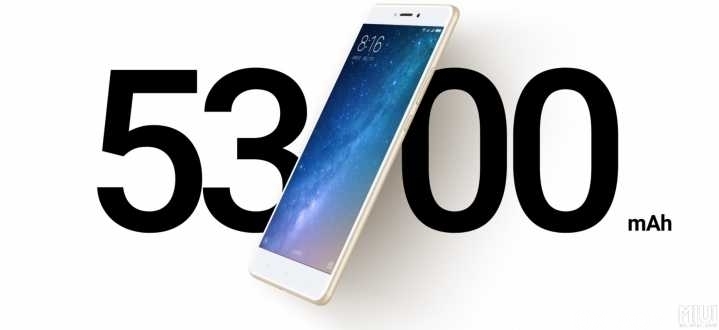 A year after the first Gig phablet, Xiaomi has unveiled the Mi Max 2. With the release of its predecessor, the Mi Max, the manufacturer has made such a step forward that the competition is barely catching up in this size.
A year after the first Gig phablet, Xiaomi has unveiled the Mi Max 2. With the release of its predecessor, the Mi Max, the manufacturer has made such a step forward that the competition is barely catching up in this size.
At first glance, the shape hasn't changed much, but the thickness, the edges and of course the hardware have. It's much more ergonomic with rounder corners, making it even more comfortable to hold the large phone. The brutal size is also accompanied by a thigh-sized battery, which allows you to use the phone for two days without any problems. You can even use it in powerbank mode. For a detailed presentation click here.
Xiaomi Mi Max 2 specifications:
- Qualcomm MSM8953 Snapdragon 625 Octa-core 2.0 Ghz processor / Adreno 506 650Mhz GPU
- 4 GB RAM
- 6.44-inch full IPS display, 400 nit brightness, 1920 x 1080 resolution, 342 PPI, 72% NTSC colour gamut
- Gold, black colour
- 64GB / 128GB storage
- 12 megapixel rear camera, Phase Detection AF, f/2.2 aperture, dark enhancement, Sony IMX386 sensor
- 5 megapixel front camera with f/2.0 aperture
- Dual SIM (Sim 2: Micro sim size, Sim 1: nano sim or micro SD card ** expandable up to 128 GB)
- 3G, LTE, LTE-A, VoLTE
- stereo speaker
- Wi-Fi, Bluetooth 4.2, GPS, A-GPS, fingerprint scanner, MU-MIMO
- 5300mAh battery (recharge support)
- Android Nugat, MIUI 8 (at launch), then MIUI 9 (Oreo in 2018)
- USB-C port
Official video
Mi 5X
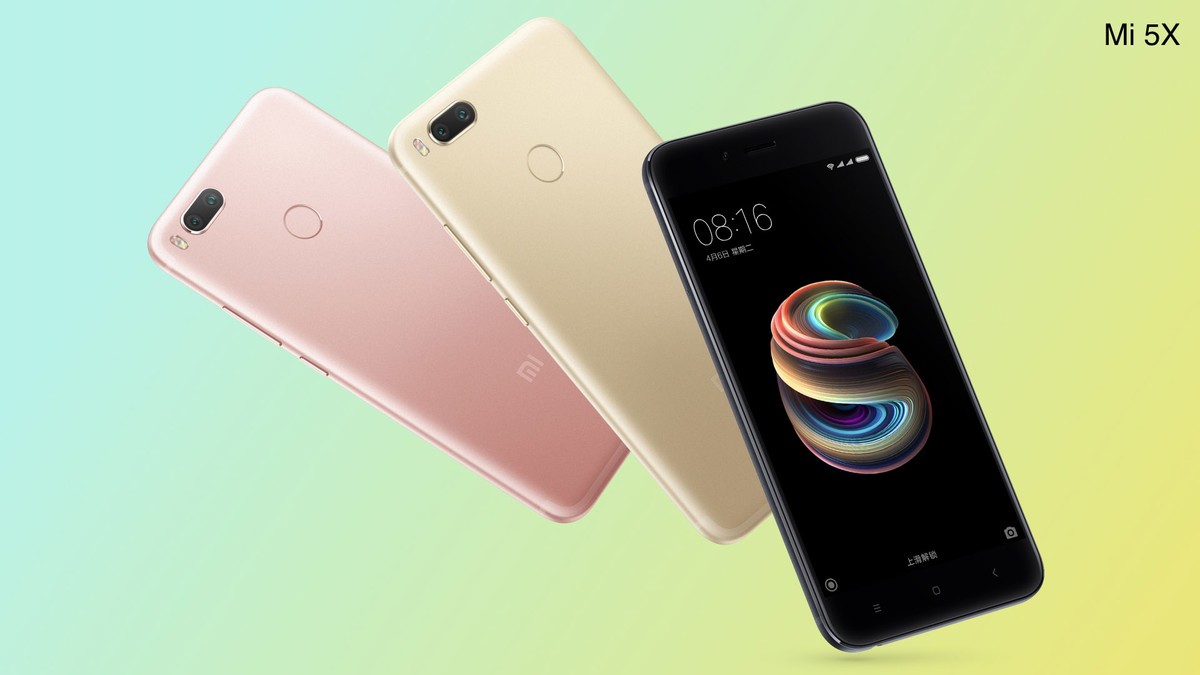 The Mi 5X is a bit of an outlier in the Xiaomi range. We still don't understand its name, as it has nothing to do with the (2016 flagship) Mi 5, Mi 5s (Mi 5s Plus) generation. Mi 5c is even understandable. After the Mi 6, we somehow looked at it as a stranger in terms of naming. What it has in common with the Mi series is the smaller battery, the lack of B20, and perhaps a touch more quality in the use of materials. But Xiaomi has brought the dual camera solution to the mid-range price level with this model.
The Mi 5X is a bit of an outlier in the Xiaomi range. We still don't understand its name, as it has nothing to do with the (2016 flagship) Mi 5, Mi 5s (Mi 5s Plus) generation. Mi 5c is even understandable. After the Mi 6, we somehow looked at it as a stranger in terms of naming. What it has in common with the Mi series is the smaller battery, the lack of B20, and perhaps a touch more quality in the use of materials. But Xiaomi has brought the dual camera solution to the mid-range price level with this model.
The camera itself has no optical image stabilisation, its lenses are of medium brightness, as is the sensor used. This makes the justification for the dual camera highly questionable, as you don't get outstanding quality either in-house or compared to the competition. It was more of a forced move compared to Oppo and Vivo models. Software-wise, it was clear from the very first moment that Xiaomi intended it as a strongly domestic market device. Fortunately, like the Mi 5c, MIUI has been improved, so we get a usable device. A Red Edition edition has done a lot to boost sales of the 5X, because it undoubtedly looks good in red.
 Find a detailed description here
Find a detailed description here
Xiaomi Mi 5X specifications:
- Qualcomm Snapdragon 625 MSM8953 Octa-core processor (2.0 Ghz Cortex-A53)
- Adreno 506, 650 Mhz GPU
- 4 GB RAM LPDDR3
- 5.5-inch LTPS FHD IPS display, 403ppi, 450 Nit
- 64 GB storage
- 12-megapixel rear camera, F/2.2 lens 5-lens wide-angle camera, F/2.6 5-piece lens PDAF support for telephoto lens
- 5 megapixel front camera with 1080p video resolution
- Dual SIM (nano sim size), Micro SD sim 2 slot capacity supported up to 128 GB
- 3G, LTE, 4G+, VoLTE
- Dual Wi-Fi, Bluetooth 4.2, GPS, A-GPS, GLONASS, BDS, rear fingerprint sensor
- Qualcomm Quick Charge 2.0
- 3080mAh battery
- Android Nougat 7.1, MIUI 8 (at launch), then MIUI 9 (Oreo questionable, but expected due to the SoC)
- USB-C port
- Black, gold, pink, red
- DAC - Aqstic
- USB-C OTG supported
Official video
Mi A1
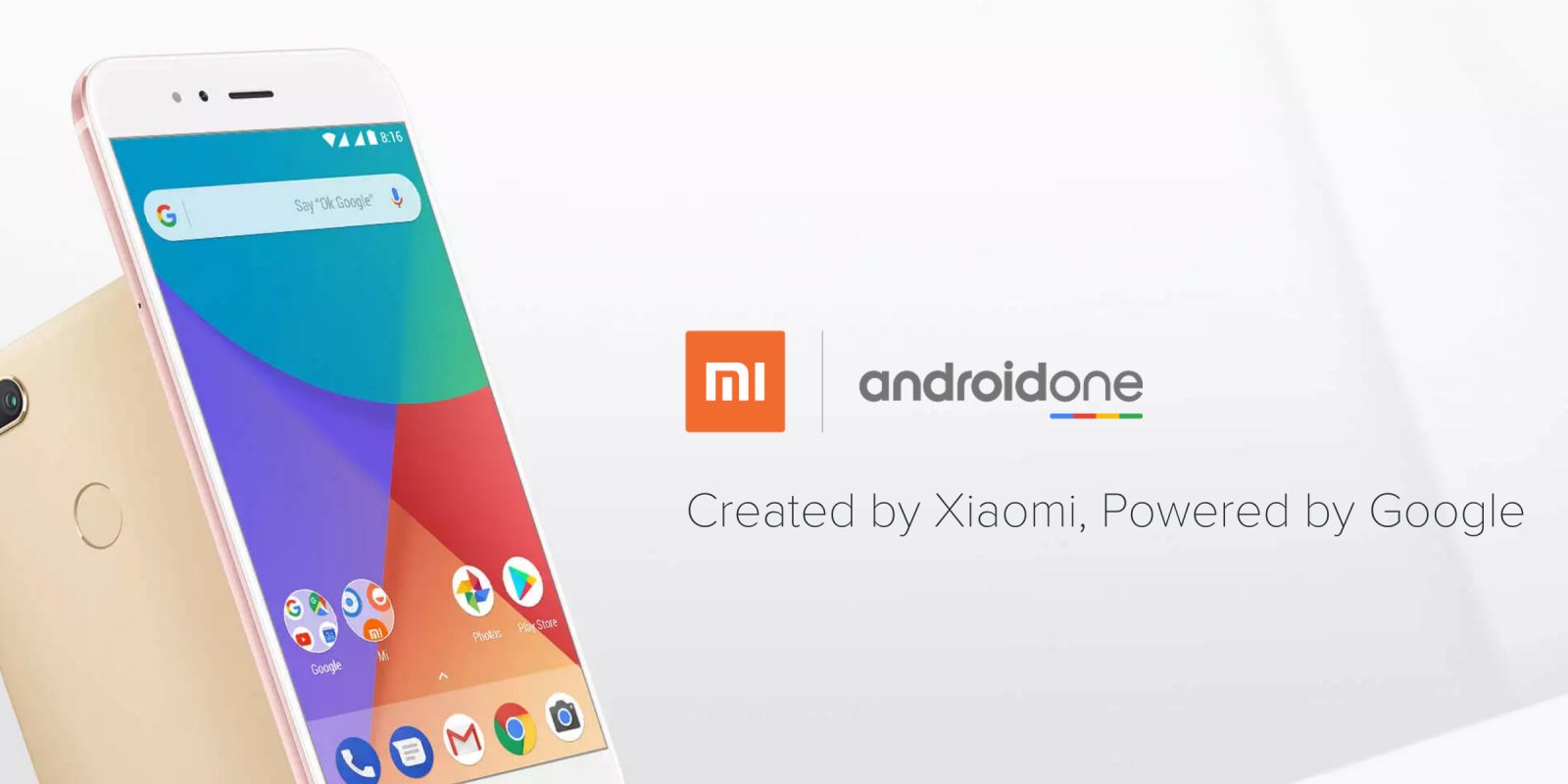 Is there life at Xiaomi without MIUI? Yes, there is. A couple of weeks before the announcement, we were watching with open mouths to see what Xiaomi would bring us as the first manufacturer to develop with Google under the Android One programme.
Is there life at Xiaomi without MIUI? Yes, there is. A couple of weeks before the announcement, we were watching with open mouths to see what Xiaomi would bring us as the first manufacturer to develop with Google under the Android One programme.
A Mi 5X with stock Android One. Yes, the Mi A1 is a Mi 5X clone in hardware, with the FM radio removed in software. Yes, but you get an always up-to-date, fuss-free (boring) system, 4K video recording support, and fast charging support with the Oreo update coming on December 31. The looks are beautiful, the camera is average, the red colour is an option here too. The huge demand is no coincidence. Although the form factor is divisive, the hardware is fair, the optimization....Nos, compared to MIUI 9, there is no measurable difference in substance. It's just as snappy and smooth. It's an excellent alternative for users who haven't chosen a Xiaomi product because of the MIUI system alone.
All we can say is "Created by Xiaomi, Powered by Google".
Description find out more about it here
Xiaomi Mi A1 specifications:
- Qualcomm Snapdragon 625 MSM8953 Octa-core processor (2.0 Ghz Cortex-A53)
- Adreno 506, 650 Mhz GPU
- 4 GB RAM LPDDR3
- 5.5-inch LTPS FHD IPS display, 403ppi, 450 Nit
- 64 GB storage
- 12-megapixel rear camera, F/2.2 lens 5-lens wide-angle camera, F/2.6 5-piece lens PDAF support for telephoto lens
- 5 megapixel front camera with 1080p video resolution
- Dual SIM (nano sim size), Micro SD sim 2 slot capacity supported up to 128 GB
- 3G, LTE, 4G+, VoLTE
- Dual Wi-Fi, Bluetooth 4.2, GPS, A-GPS, GLONASS, BDS, rear fingerprint sensor
- Qualcomm Quick Charge 2.0
- 3080mAh battery
- Android Nougat 7.1, from 31 December Android 8.0 Oreo
- USB-C port
- Black, gold, pink
- DAC - Aqstic
- USB-C OTG supported
Mi MIX 2
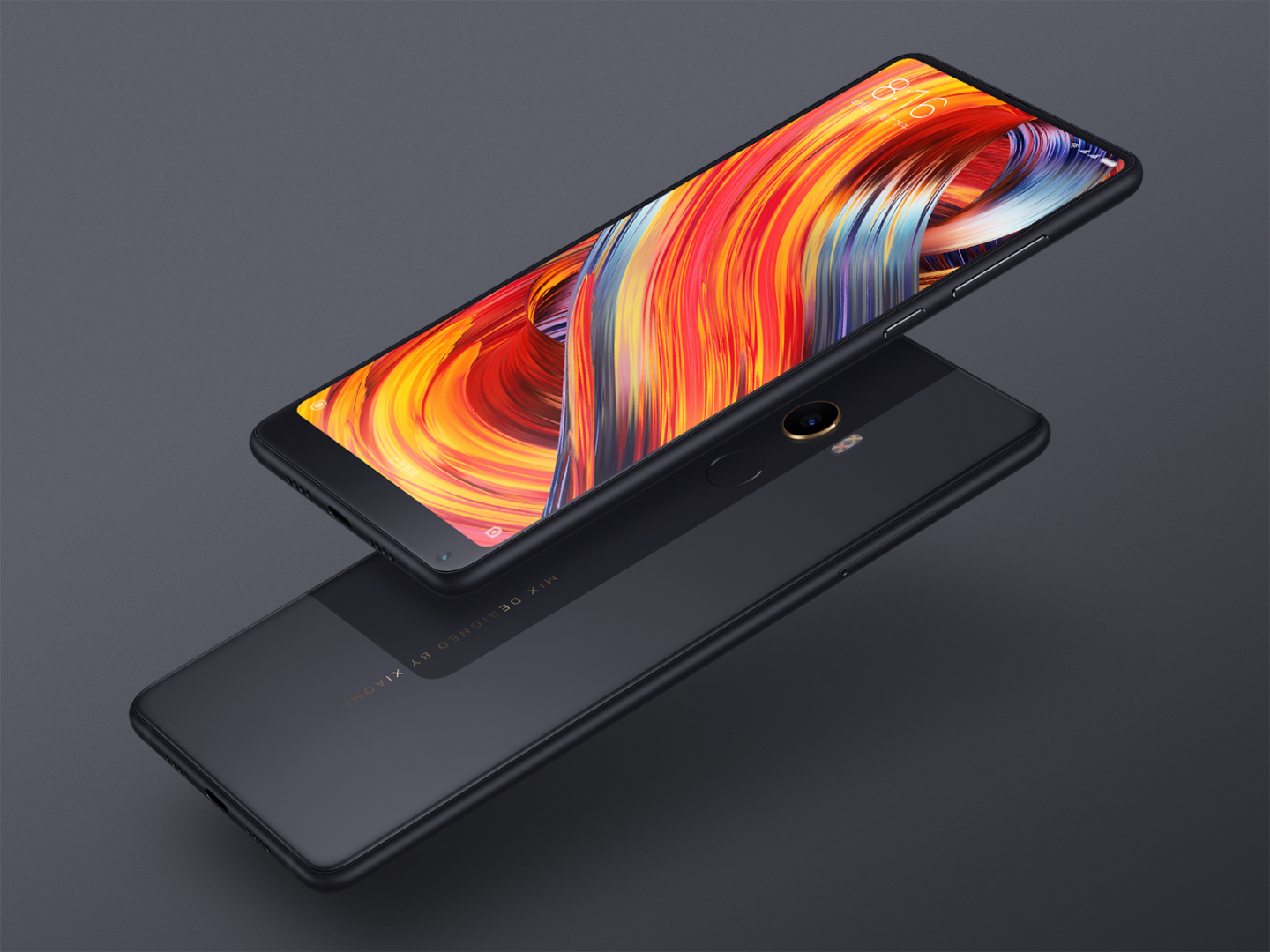 After the worldwide success of Mi MIX, Philippe Starck is back to create again. Perhaps even bigger than the first version. Although the successor is smaller, the full power frequency support and the omission of the bone-shaking speaker are expected to make it an even bigger hit, now all over the world. In terms of camera, the Mi MIX 2 hasn't rolled as much as it has in terms of beauty and technology.
After the worldwide success of Mi MIX, Philippe Starck is back to create again. Perhaps even bigger than the first version. Although the successor is smaller, the full power frequency support and the omission of the bone-shaking speaker are expected to make it an even bigger hit, now all over the world. In terms of camera, the Mi MIX 2 hasn't rolled as much as it has in terms of beauty and technology.
In fact, with the Mi MIX family, Xiaomi has created a new concept, a new category. The competition probably nodded in recognition when they saw what the Chinese manufacturer could do.
The success of the Mi MIX has also been attempted to be emulated by up-and-coming Chinese manufacturers. With a real Chinese mentality and attitude (stolen name, shape, wallpaper, advertising imagery and text), they are trying to get a piece of that particular pie. Although the quality has improved, they will never catch up with Xiaomi. Nice try, though. I should note, however, that - albeit with many compromises - users who plan to spend less can still enjoy this form and design. I must therefore give some justice to the existence of clones. You can read our own Helloxiaom test here.
Mi MIX 2 specifications:
- Qualcomm MSM8998 Snapdragon 835 8-core processor (4×2.45 GHz Cryo and 4×1.9 GHz Cryo)
- Adreno 540 GPU
- 6GB / 8GB RAM LPDDR4
- 5.99-inch IPS LCD display, ultra-bright, energy-saving display
- ~ 80,8% screen-to-body ratio
- 1080 x 2160 pixels FHD+ (~403ppi pixel density), 1500:1 contrast ratio
- DCI-P3 colour gamut, high colour saturation
- Black and white ceramic finish
- 64GB / 128GB / 256GB of storage UFS 2.1
- 12 MP single camera, 5 lens elements, 1.25 μm Sony sensor, 4-axis OIS, f/2.0, dark compensation, phase detection autofocus, dual LED flash
- 5 MP front-facing camera, autofocus, mirror function, 3rd generation 36 smart beauty features
- Fingerprint scanner at the back
- Dual SIM (nano sim size)
- 3G, LTE, 4G+ full network frequency support in all countries worldwide, VoLTE
- Wi-Fi, Bluetooth 5.0, GPS, A-GPS, NFC
- 3400mAh battery, Quick Charge 3.0 supported 9V/3A
- 2 x 2 MIMO technology with MU-MIMO support
- Sensors: ultrasonic rangefinder, ambient light sensor, gyroscope, accelerometer, barometer, electronic compass, Hall sensor
- Android Nougat 7.1.1, MIUI 8 at announcement, currently MIUI 9, Oreo major version in beta
- USB-C port
- 151.8 mm x 75.5 mm x 7.7 mm Physical size
- 185 grams
Official video
Mi Note 3
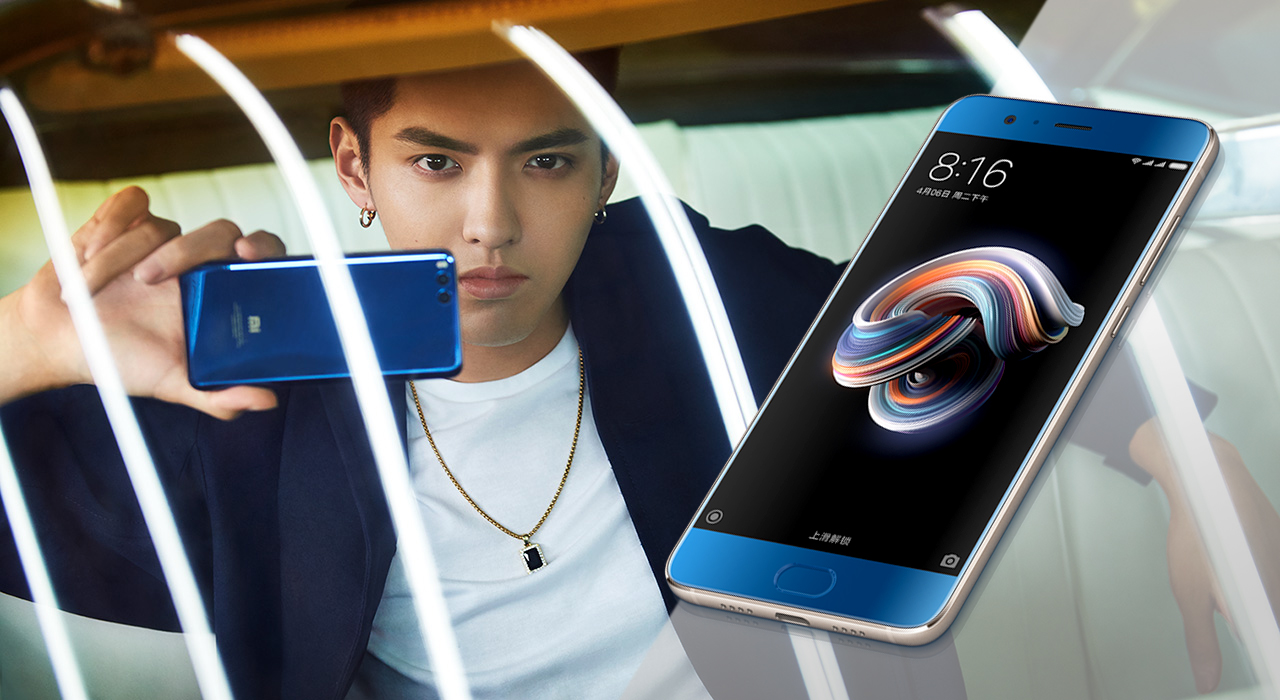 11 months after the launch of the Mi Note 2, the Mi Note 3 is the successor, and perhaps one of the most shareable phones Xiaomi has released in 2017. Before the launch, dozens of rumours and renders surfaced. Many predicted an OLED edge panel (just like the predecessor), but what we ended up with was not only the elongated design of the Mi 6, but also a step backwards in processor and other hardware components. This is the debut (for Xiaomi) of Qualcomm's upper-mid-range processor, the Snapdragon 660, which tests show is a hair behind last year's top-of-the-line SD 820. From a camera point of view, however, we can't say a word, as the same unit is used as in the Mi 6. Its capabilities also scored highly in DXO's test. Battery life is not bad either, thanks to the frugal processor.
11 months after the launch of the Mi Note 2, the Mi Note 3 is the successor, and perhaps one of the most shareable phones Xiaomi has released in 2017. Before the launch, dozens of rumours and renders surfaced. Many predicted an OLED edge panel (just like the predecessor), but what we ended up with was not only the elongated design of the Mi 6, but also a step backwards in processor and other hardware components. This is the debut (for Xiaomi) of Qualcomm's upper-mid-range processor, the Snapdragon 660, which tests show is a hair behind last year's top-of-the-line SD 820. From a camera point of view, however, we can't say a word, as the same unit is used as in the Mi 6. Its capabilities also scored highly in DXO's test. Battery life is not bad either, thanks to the frugal processor.
The phone, also known as the Mi 6 Plus, still hasn't received a B20, so many domestic users are hesitant to buy it. There are several articles about the Mi Note 3, find them using the search engine. But you can find the detailed description here.
The same presentation as the Mi MIX 2, the unreasonably high starting price, the omission of waterproofing solutions used in the Mi 6, overshadowed the success of the Mi Note 3. The price drop of the Mi MIX, and the Mi MIX 2's knowledge uptake, is not helping sales surge. That said, there was a Kris Wu edition and a 4GB RAM version. Let's hope that the price, which has since come down, will attract a sufficient number of buyers in the coming period.
Xiaomi Mi Note 3 specification :
- Qualcomm MSM8956 Snapdragon 660 octa-core processor (4 x 2.2 GHz Kyro 260 and 4 x 1.8 GHz Kyro 260)
- Adreno 512 GPU 650MHz
- 4/6GB RAM LPDDR4 1866MHz
- 5.5-inch IPS LCD display ultra bright, energy efficient display (~73.8% screen-to-body ratio), 1080 x 1920 pixels (~403 ppi pixel density)
- NTSC 94.4 % colour gamut
- Polished, brushed aluminium frame
- 4GB / 128GB storage eMMC 5.1
- 12MP dual lens Sony IMX 386 camera sensor , 2X magnification, 4-axis OIS, dual LED flash
- 6 MP front camera, f/2.0, autofocus
- Fingerprint scanner, facial recognition
- Dual SIM (nano sim size)
- 3G, LTE, 4G+, VoLTE
- Wi-Fi, Bluetooth 5.0, GPS, A-GPS, NFC, Qualcomm Quick Charge 3.0
- 3500mAh battery
- Android Nugat, MIUI 8 at announcement, followed a few weeks later by MIUI 9.
- USB-C port
- Black, blue, white
Official video
Redmi series
Redmi Note 4X (Snapdragon)
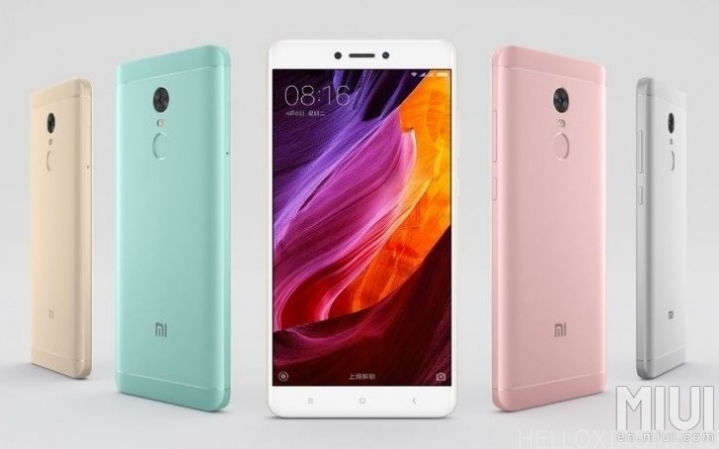 The Redmi Note 4X was rumoured to be released back in December 2016. Then months later, the Snapdragon version of the Redmi Note 4(X) was unveiled. Mediatek's processor, while not lacking in power, was not the best choice for battery life, warming and support. Here comes the twist, as there is already an SD625 version of the Redmi Note 4, which is also available with B20 support. In addition, both the Redmi Note 4 and Redmi Note 4x can be purchased with MTK processors, in multiple RAM/ROM variants and colours. I won't go into the details, as it would be worth a separate article. The success of the Redmi Note 4 is indisputable, as its superbly optimized system, sufficiently powerful SoC, combo battery, and attractive pricing make it the best-selling mid-range phablet on the market.
The Redmi Note 4X was rumoured to be released back in December 2016. Then months later, the Snapdragon version of the Redmi Note 4(X) was unveiled. Mediatek's processor, while not lacking in power, was not the best choice for battery life, warming and support. Here comes the twist, as there is already an SD625 version of the Redmi Note 4, which is also available with B20 support. In addition, both the Redmi Note 4 and Redmi Note 4x can be purchased with MTK processors, in multiple RAM/ROM variants and colours. I won't go into the details, as it would be worth a separate article. The success of the Redmi Note 4 is indisputable, as its superbly optimized system, sufficiently powerful SoC, combo battery, and attractive pricing make it the best-selling mid-range phablet on the market.
Redmi Note 4X SD Specification:
- 5.5-inch Full HD display @ 1920 x 1080 pixels, 403ppi, 72% NTSC colour gamut
- 2GHz Snapdragon 625 Octa-core CPU
- Adreno 506 GPU
- 3 GB / 4 GB RAM
- 32 GB / 64 GB internal storage
- MicroSD card slot, expandable up to 128 GB (SIM 2 slot)
- 13MP rear camera, f/2.0, phase detection autofocus, dual LED flash
- 5MP f/2.0 front camera with 1080p video
- Dual-SIM (Nano + Micro SIM/microSD)
- 4G LTE, 4G+
- Wi-Fi 802.11n
- Bluetooth 4.2, A2DP, LE
- GPS w/A-GPS, GLONASS, BDS
- Fingerprint scanner
- Micro-USB port
- 4100 mAh battery
- Android 6.0 MIUI 8, followed by Android 7 and MIUI 9
- 151 mm x 76 mm x 8.45 mm Physical size
- 165 g
- Hatsune in turquoise, black, pink, gold, grey
Official video
Redmi 4X
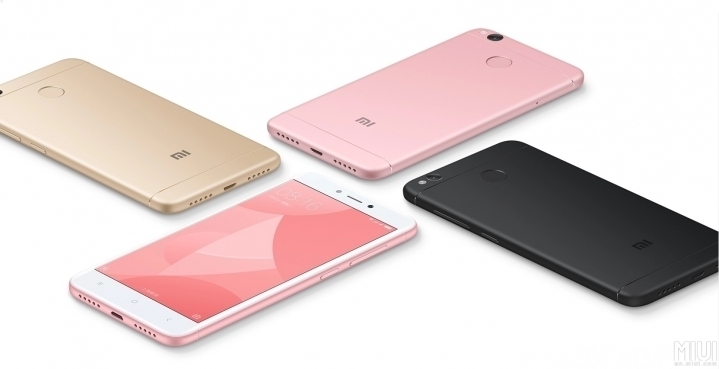 While the eyes of the world's press were on the Pinecone Surge S1 SoC, and with it the Mi 5c, the Redmi 4X was released.
While the eyes of the world's press were on the Pinecone Surge S1 SoC, and with it the Mi 5c, the Redmi 4X was released.
First Redmi 4, then Redmi 4 Prime, then Redmi 4A, and now the X series. The Redmi Note 4 and Redmi Note 4 SD have become popular models in India, so it was expected that the Redmi 4X would also arrive in the populous country. For those for whom the tablet size is too big, the Redmi 4X with a compact 5″ IPS display is an ideal choice. In our country, it is perhaps the most popular model in the Redmi series.
Xiaomi Redmi 4X Specification
- Qualcomm Snapdragon 435 MSM8940 Octa-Core processor (Octa Core 1.4Ghz Cortex A53)
- Adreno 505 GPU, 450Mhz
- 2 GB / 3 GB RAM
- 5-inch HD display, 1280 x 720 resolution, 72% NTSC colour gamut
- 16 GB / 32 GB storage, expandable up to 128 GB microSD slot (using sim 2 slot)
- 13 megapixel rear camera, phase detection AF, f/2.0
- 5 megapixel front camera f/2.2 with face detection
- Fingerprint sensor
- Dual-SIM (Sim 1 Micro Sim, Sim 2 Nano Sim / Micro SD card up to 128 GB)
- 3G, LTE, Full Netcom 2.0
- Android 6.0.1 MIUI 8 at announcement, followed by Android 7.0 Nougat and MIUI 9 (Oreo in 2018)
- WiFi, Bluetooth 4.2, GPS, A-GPS, GLONASS
- 4100mAh battery, 2A 5V
- Black, gold, pink colours
Redmi Note 5A
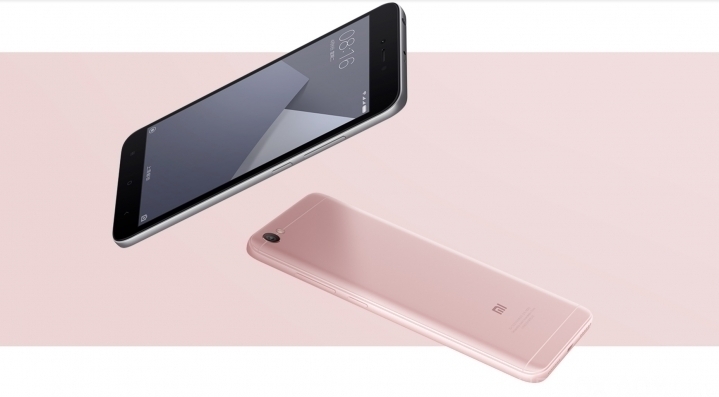 Following the success of the Redmi 4A, Xiaomi has wasted no time in announcing the next addition to the Redmi range. This time, it was going to introduce a cheaper phablet in the 5.5-inch size. Although the Redmi Note series is popular, an even cheaper model had to be added to the range.
Following the success of the Redmi 4A, Xiaomi has wasted no time in announcing the next addition to the Redmi range. This time, it was going to introduce a cheaper phablet in the 5.5-inch size. Although the Redmi Note series is popular, an even cheaper model had to be added to the range.
Here again there is confusion about naming and publication order. Why?
The new, low-budget phablet is called the Redmi Note 5A, which was released before the Redmi 5A and the new Redmi 5/5 Plus. Not to mention the rumoured Redmi Note 5.
Read the full description of the Redmi Note 5A here.
The confusion is compounded by the dual-processor edition. Therefore, you can see in the specification what the main differences are.
Redmi Note 5A Specification
- 5.5 inch display @ 720 x 1280 pixels, 401 PPI, 70% NTSC colour gamut, 450 nit
- Qualcomm Snapdragon 425 quad core CPU, Cortex A53, MSM8917
- Adreno 308 GPU
- 2 GB RAM
- 16 GB internal storage
- Expandable with MicroSD card up to 128 GB (dedicated expansion slot!)
- 13MP rear camera, f/2.2
- 5MP f/2.0 front camera
- Dual SIM (Nano + Nano)
- 4G LTE, 3G (4G+ not available, B20 not available)
- Wi-Fi 802.11b/g/n
- Bluetooth 4.2, A2DP, LE
- Wifi Direct
- GPS w / A-GPS, GLONASS
- Micro-USB port
- 3080 mAh battery
- Android 7.1 Nougat / MIUI 8 at announcement, followed by MIUI 9
- 53 mm x 76.2 mm x 7.7 mm
- 150 g
- Gold, gold, grey colour, plastic cover
Redmi Note 5A Prime Specification
- 5.5 inch display @ 720 x 1280 pixels, 401 PPI, 70% NTSC colour gamut, 450 nit
- Qualcomm Snapdragon 435 Octa-core CPU, Cortex A53, MSM8940
- Adreno 505 GPU
- 3 GB RAM
- 32 GB internal storage
- Expandable via MicroSD up to 128 GB (dedicated expansion slot!)
- 13MP rear camera, f/2.2
- 16MP f/2.0 front camera, 1080p video, front (selfie) flash
- Dual SIM (Nano + Nano)
- 4G LTE, 3G (4G+ not available, B20 not available)
- Wi-Fi 802.11ac
- Bluetooth 4.2, A2DP, LE
- Wifi Direct
- GPS w / A-GPS, GLONASS
- Fingerprint scanner
- Micro-USB port
- 3080 mAh battery
- Android 7.1 Nougat / MIUI 8, then MIUI 9
- 153mm x 76.2mm x 7.7mm Physical size
- 153 g
- Gold, gold, grey colour, metal back
Redmi 5A
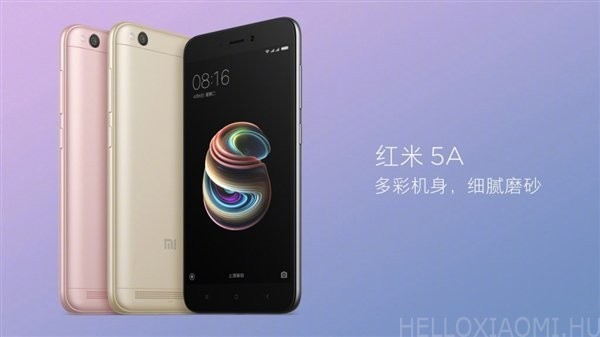 While we were busy with the Mi MIX 2, Xiaomi unexpectedly announced the cheapest Redmi successor ever. Fortunately, there was only one version of this model made in China. Exactly one year after the release of the Redmi 4A, it didn't come as a huge surprise, but the barely changing specifications did.
While we were busy with the Mi MIX 2, Xiaomi unexpectedly announced the cheapest Redmi successor ever. Fortunately, there was only one version of this model made in China. Exactly one year after the release of the Redmi 4A, it didn't come as a huge surprise, but the barely changing specifications did.
You can read a more detailed article here.
Xiaomi Redmi 5A Specification
- Qualcomm Snapdragon 425 MSM8917 quad-core processor 1.4Ghz Cortex A53
- Adreno 308 GPU, 500Mhz
- 2 GB RAM
- 5-inch HD display, 1280 x 720 resolution, 296 PPI, 72% colour gamut, reader mode support
- 16 GB of storage, expandable up to 128 GB with microSD (using sim 2 slot)
- 13 megapixel rear camera, f/2.2 LED flash, 1080p video recording
- 5 megapixel front camera f/2.0, face detection
- Dual-SIM (Sim 1 Micro Sim, Sim 2 Nano Sim / Micro SD card up to 128 GB)
- 3G, LTE, Full Netcom 5.0
- Android Nougat 7.1.2 MIUI 8.5, then MIUI 9
- WiFi, Bluetooth 4.1, GPS, A-GPS
- 3000mAh battery
- Gold, gold plated, grey colour, plastic housing
Redmi Y1/Lite
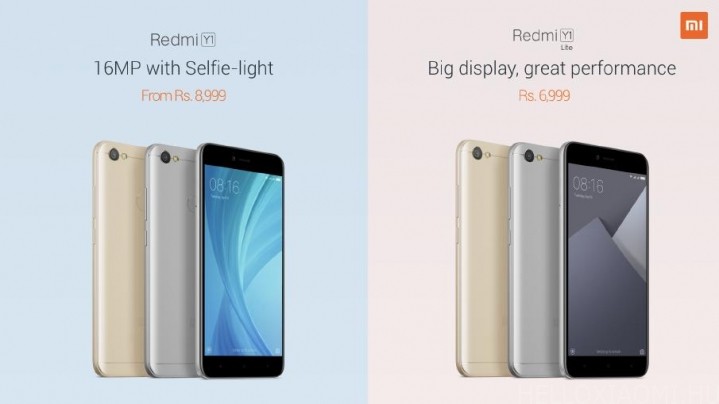 Xiaomi (re)launched the Redmi Note 5A in 2017, only this time the Indian market version is called Y1 and Y1 Lite. What's the key difference for us? The B20, but that could come in very handy. Provided of course that there's a proper Global ROM for it, weeding out the India-specific apps. Maybe we can put the Redmi Note 5A ROM in 1:1, in which case the Redmi Note 5A will cease to exist outside China. Read our detailed presentation here.
Xiaomi (re)launched the Redmi Note 5A in 2017, only this time the Indian market version is called Y1 and Y1 Lite. What's the key difference for us? The B20, but that could come in very handy. Provided of course that there's a proper Global ROM for it, weeding out the India-specific apps. Maybe we can put the Redmi Note 5A ROM in 1:1, in which case the Redmi Note 5A will cease to exist outside China. Read our detailed presentation here.
Redmi 5 and Redmi 5 Plus

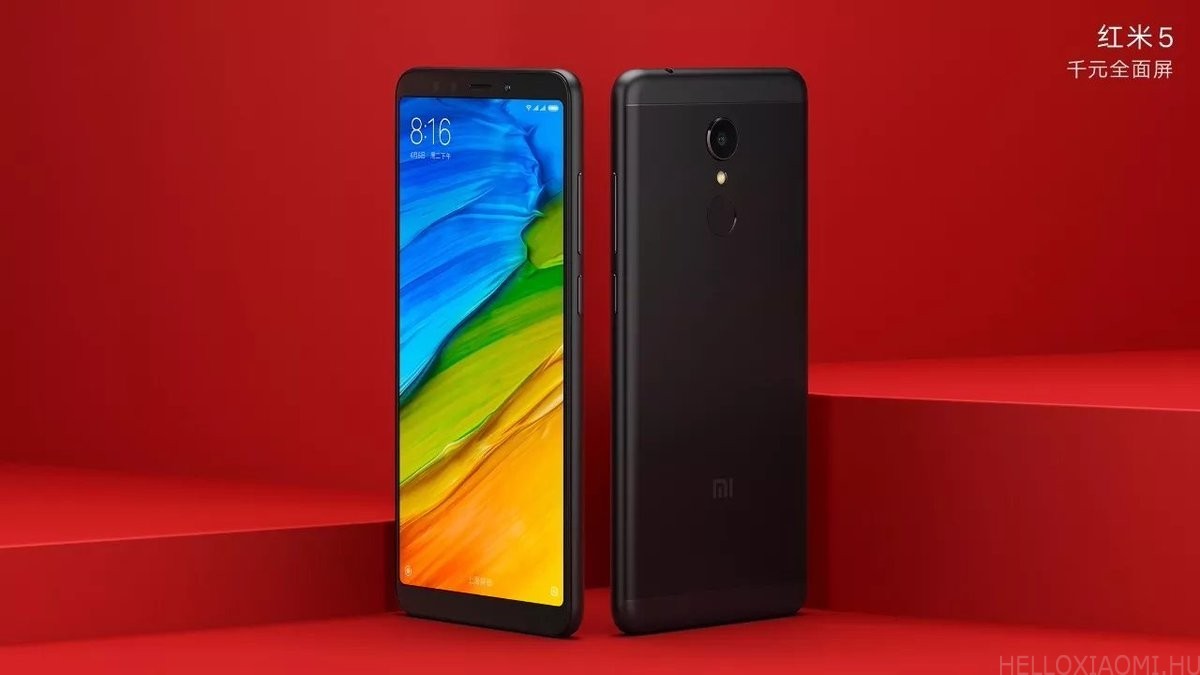
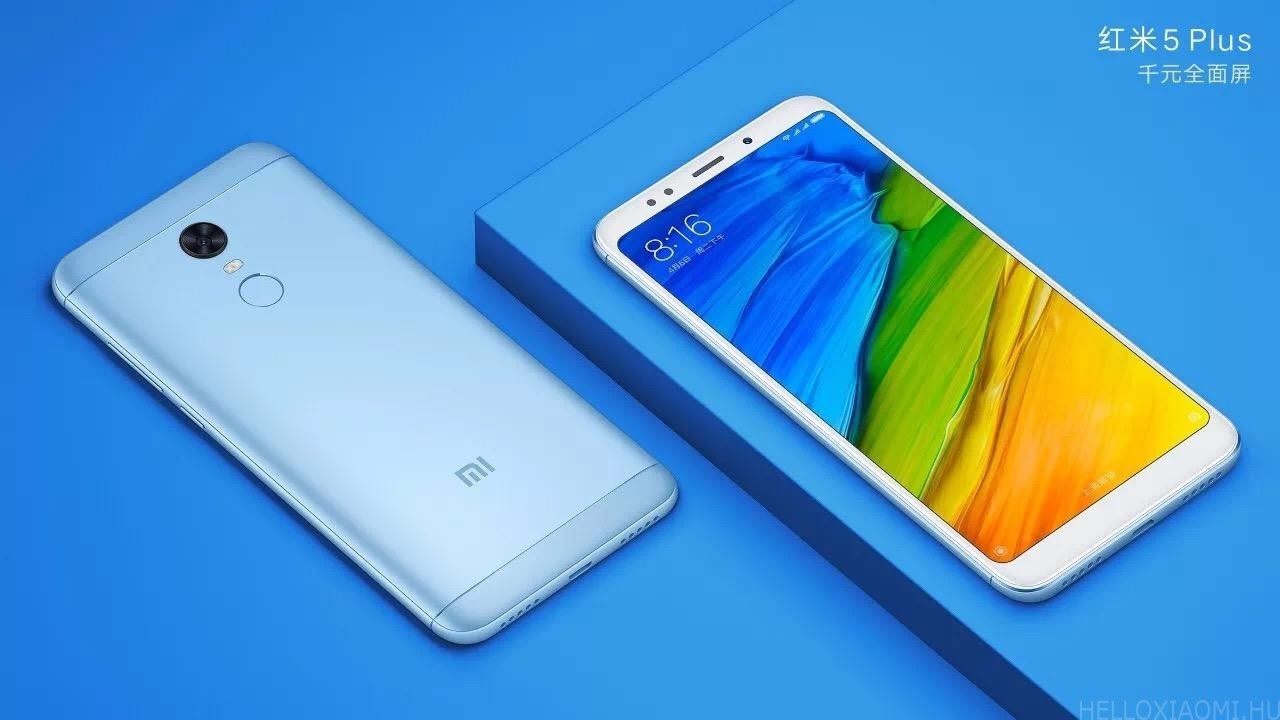 The end of the year was the most anticipated. After this year's Mi Series line-up was over, all the eyes of the fans were scouring the web for specs and renders. Lucky for you, we've gathered the most up-to-date - and credible - information and published it in good time. The manufacturer has really timed the launch, as everyone was expecting the announcement for the "Singles' Day" in November. No specific date, just the silence. We thought we were going to end the year without Xiaomi bringing us a mid-range Redmi with an 18:9 display. For a long time, the name wasn't accurate, nor was the release of the Plus version. Finally, days after the announcement, the day after Santa Claus, the event kicked off at 7am Hungarian time.
The end of the year was the most anticipated. After this year's Mi Series line-up was over, all the eyes of the fans were scouring the web for specs and renders. Lucky for you, we've gathered the most up-to-date - and credible - information and published it in good time. The manufacturer has really timed the launch, as everyone was expecting the announcement for the "Singles' Day" in November. No specific date, just the silence. We thought we were going to end the year without Xiaomi bringing us a mid-range Redmi with an 18:9 display. For a long time, the name wasn't accurate, nor was the release of the Plus version. Finally, days after the announcement, the day after Santa Claus, the event kicked off at 7am Hungarian time.
On 6 December we did not have a stream link. On December 7, I woke up an hour and a half earlier than my biorhythm to somehow find the stream channel. Of course, it was just where it was supposed to be, just not what we expected. On the more popular browsers, the stream would stutter (if it was just starting) and then quickly get interrupted after the results were announced.
This is not the style that a Xiaomi fan would expect, given that it is intended for a global market and has several European stores. But at least it's nice, and the price probably won't creep up from what was announced. And extra good news is that a Global version with B20 support is expected around February-March. Then we will have a really popular model. Plus, there are two sizes to choose from, with different hardware.
Proven SoC
The SoC almost nothing has changed, but to our surprise the processor remains SD 625 in the Plus version. Yes, what is the problem? It's just that by default, this processor doesn't support FHD+ resolution at 18:9 aspect ratio. It's not a coincidence that Xiaomi signed with Qualcomm earlier, they got a special tuning and with it a clock speed increase. And lo and behold, the good old SD625 still runs in FHD+ mode. Why is that good? Because this processor is already proven. It's tried and tested, optimized, frugal, "enough for everything". And... cheap! That said, the price of the phone hasn't been thrown up enough to pique the interest of those who want a new design and don't want to spend a month's salary on the Mi MIX 2. Read our full presentation here.
Redmi 5 Plus specification
- 5.99-inch Full HD+ display @ 2160 x 1080 pixels, 403ppi, 84% NTSC colour gamut, 450 nit brightness
- 2.0GHz Snapdragon 625 Octa-core processor Qualcomm MSM8953 Cortex A-53
- Adreno 506 GPU
- 3 GB / 4 GB RAM
- 32 GB / 64 GB internal storage
- Expandable up to 128 GB via MicroSD card (SIM 2 slot)
- 12MP 1.25μm rear camera, f/2.2 aperture, phase detection autofocus, dual LED flash, face detection
- 5MP front-facing camera, professional flash, 1080p video, Smart Beauty 3.0
- Dual SIM (Nano + Nano)
- 4G LTE, 4G+
- Wi-Fi 802.11 b/g/n
- Bluetooth 4.2, Bluetooth HID
- GPS w/A-GPS, GLONASS, BDS
- Fingerprint scanner
- Micro-USB port
- 4000 mAh battery
- Android 7.1 with MIUI 9.0.3 (Oreo coming soon)
- 158,5 mm x 75,45 mm x 8,05 mm Physical size
- 180 grams
- Black, gold, light blue, light blue, pink colour, metal back
Redmi 5 Specification
- 5.7-inch HD+ display @ 1440 x 720 pixels, 282ppi, 72% NTSC colour gamut, 450 nit brightness
- 1.8 GHz Qualcomm Snapdragon 450 Octa-core CPU Cortex A-53
- Adreno 506 GPU
- 2 GB / 3 GB RAM
- 16 GB / 32 GB internal storage
- Expandable with MicroSD card (SIM 2 slot)
- 2MP 1.25μm rear camera, f/2.2 aperture, phase detection autofocus, single LED flash, face detection
- 5MP front camera, selfie flash, 1080p video, Smart Beauty 3.0
- Dual SIM (Nano + Nano)
- 4G LTE, 4G+
- Wi-Fi 802.11 b/g/n
- Bluetooth 4.2, Bluetooth HID
- GPS w/A-GPS, GLONASS, BDS
- Fingerprint scanner
- Micro USB port
- 3300 mAh battery
- Android 7.1.2 with MIUI 9.1 (Oreo coming soon)
- 151.8 mm x 72.8 mm x 7.7 mm Physical size
- 157 grams
- ecete, gold, light blue, pink colours
Official video
This marks the end of Xiaomi's 2017 repertoire.
We look forward to seeing what 2018 brings for us. Xiaomi has a strong line-up for the year ahead. In a couple of months, they'll unveil the Mi 7 with the latest SD 845 processor, AI facial recognition, Qi charging support, 18:9 display. Redmi phones are also changing, especially in display ratio. The new Mi MIX is coming in the autumn. New category announcements, the disappearance or even transformation of some models, depending on what the trends dictate. The Redmi Note 5 is rumoured to be replaced by the Redmi 5 Plus, while the 4th generation Mi Pad is expected to be tailored to a completely different set of needs. We also expect a deal in Hungary, as well as support for the full 4G spectrum range, especially for the Mi series.
Join us again next year! We promise to bring you even more content, more of our own tests, and more spectacular Xiaomi news and features. We'll have even more competitions and surprises in store.
And don't forget, MIUI Hungary Meeting again next autumn!
On behalf of myself and Kornél, we wish you a Happy New Year full of Peace, Happiness, Xiaomi and MIUI!

















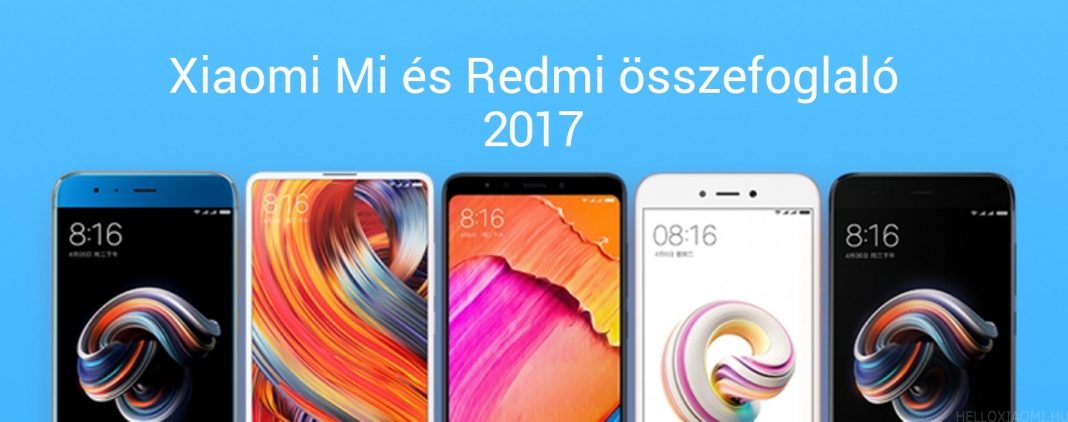

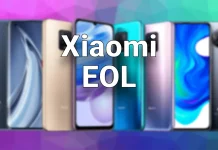
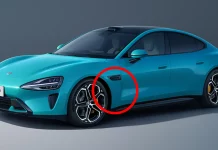
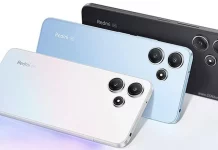
![[149] HyperOS heti hibajelentés](https://helloxiaomi.hu/wp-content/uploads/2024/04/hyperosbugreportindex-218x150.webp)

